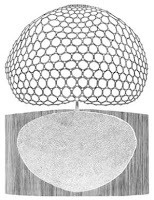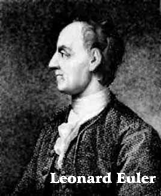Most people think of "seeing" and "observing" directly with their senses. But for physicists, these words refer to much more indirect measurements involving a train of theoretical logic by which we can interpret what is "seen."- Lisa Randall
There are certain advantages to the theoretical perspective that can best portray the concepts of the world they live in with what appears, however abstract, with the minds value of image solicitor impressionism which helps the minds state of acceptance. So it had to be explained first.
Cubist art revolted against the restrictions that perspective imposed. Picasso's art shows a clear rejection of the perspective, with women's faces viewed simultaneously from several angles. Picasso's paintings show multiple perspectives, as though they were painted by someone from the 4th dimension, able to see all perspectives simultaneously.
Cubist Art: Picasso's painting 'Portrait of Dora Maar'
P. Picasso Portrait of Ambrose Vollard (1910)
M. Duchamp Nude Descending a Staircase, No. 2 (1912)
J. Metzinger Le Gouter/Teatime (1911)
The appearance of figures in cubist art --- which are often viewed from several direction simultaneously --- has been linked to ideas concerning extra dimensions:
As if, looking at it from a larger perspective. If you stand outside of the image and see that it is capable of illuminating many angles of perspective. This helped us to see that it is derived from a much larger understanding then what is solidified to the everyday we live in.
For the artist it was a bold move to understanding that perspective could help us see Mona Lisa's smile as moving with us as we move around. So that was the challenge then was to appreciate the value of this artistic push into how we see as to understanding the road non- euclidean took was meet by people as well to culminate in a geometrical transitional form
Hyperspace: A Scientific Odyssey
A look at the higher dimensionsBy Michio Kaku
"Why must art be clinically “realistic?” This Cubist “revolt against perspective” seized the fourth dimension because it touched the third dimension from all possible perspectives. Simply put, Cubist art embraced the fourth dimension. Picasso's paintings are a splendid example, showing a clear rejection of three dimensional perspective, with women's faces viewed simultaneously from several angles. Instead of a single point-of-view, Picasso's paintings show multiple perspectives, as if they were painted by a being from the fourth dimension, able to see all perspectives simultaneously. As art historian Linda Henderson has written, “the fourth dimension and non-Euclidean geometry emerge as among the most important themes unifying much of modern art and theory."
Then, it quickly comes home to mind that maybe what is given, lets say in context of Lee Smolin's road to Quantum Gravity of the thing will help us quickly see the value of describing "the space of an interior" with what is happening on the screen/label.
More then just a Bekenstein imagery to illustrate a conformal approach to describing what are the contends of the tomato soup can from it's label.
Campbell's Soup Can by Andy Warhol Exhibited in New York (USA), Leo Castelli Gallery
It was necessary to see that the geometric used here were helping to shape perspective around not only "time travel" but a means to an end to use mathematical perspective to actually mean something in relation to understanding our world. A way to describe abstract concepts that were correlated with the progression of those mathematics. Klein's ordering of geometries then take on a new meaning as we move deep into the world we all know and love.
In 1919, Kaluza sent Albert Einstein a preprint --- later published in 1921 --- that considered the extension of general relativity to five dimensions. He assumed that the 5-dimensional field equations were simply the higher-dimensional version of the vacuum Einstein equation, and that all the metric components were independent of the fifth coordinate. The later assumption came to be known as the cylinder condition. This resulted in something remarkable: the fifteen higher-dimension field equations naturally broke into a set of ten formulae governing a tensor field representing gravity, four describing a vector field representing electromagnetism, and one wave equation for a scalar field. Furthermore, if the scalar field was constant, the vector field equations were just Maxwell's equations in vacuo, and the tensor field equations were the 4-dimensional Einstein field equations sourced by an EM field. In one fell swoop, Kaluza had written down a single covariant field theory in five dimensions that yielded the four dimensional theories of general relativity and electromagnetism. Naturally, Einstein was very interested in this preprint .
I quickly divert the attention to the world of Thomas Banchoff because it is an extraordinary move from all that we know is safe. It is not lost to some computer animator world that one engages loses the self in the process? It is also to show that what Lee Smolin tried to distance himself from, was in fact seeking to find itself understood in this way. Concurrent agreement that theoretics was trying to arrive at a consensus of different approaches saying the same thing?
Monte Carlo methods are a class of computational algorithms that rely on repeated random sampling to compute their results. Monte Carlo methods are often used in simulating physical and mathematical systems. Because of their reliance on repeated computation of random or pseudo-random numbers, these methods are most suited to calculation by a computer and tend to be used when it is unfeasible or impossible to compute an exact result with a deterministic algorithm.[1]
Monte Carlo simulation methods are especially useful in studying systems with a large number of coupled degrees of freedom, such as fluids, disordered materials, strongly coupled solids, and cellular structures (see cellular Potts model). More broadly, Monte Carlo methods are useful for modeling phenomena with significant uncertainty in inputs, such as the calculation of riskdefinite integrals, particularly multidimensional integrals with complicated boundary conditions. It is a widely successful method in risk analysis when compared with alternative methods or human intuition. When Monte Carlo simulations have been applied in space exploration and oil exploration, actual observations of failures, cost overruns and schedule overruns are routinely better predicted by the simulations than by human intuition or alternative "soft" methods.[2]For me it had to make some sense such transference from that artistic impressionism help to direct the mind to the ways and means of understanding quantum gravity was being inspected in terms of Monte Carlo methods to understanding. These had a surface value in my mind to an accumulate acceptance of the geometry and methods used to model this understanding.
So you understand now how we arrived at an interpretation of the value of lets say Dyson's opinion about how we might view Riemann's Hypothesis?
Dyson, one of the most highly-regarded scientists of his time, poignantly informed the young man that his findings into the distribution of prime numbers corresponded with the spacing and distribution of energy levels of a higher-ordered quantum state. Mathematics Problem That Remains Elusive —And Beautiful By Raymond Petersen
***
DNA Computing
DNA computing is a form of computing which uses DNA, biochemistry and molecular biology, instead of the traditional silicon-based computer technologies. DNA computing, or, more generally, molecular computing, is a fast developing interdisciplinary area. Research and development in this area concerns theory, experiments and applications of DNA computing See:DNA computing
Clifford of Asymptotia is hosting a guest post by Len Adleman: Quantum Mechanics and Mathematical Logic.
Today I’m pleased to announce that we have a guest post from a very distinguished colleague of mine, Len Adleman. Len is best known as the “A” in RSA and the inventor of DNA-computing. He is a Turing Award laureate. However, he considers himself “a rank amateur” (his words!) as a physicist.
Len Adleman-For a long time, physicists have struggled with perplexing “meta-questions” (my phrase): Does God play dice with the universe? Does a theory of everything exist? Do parallel universes exist? As the physics community is acutely aware, these are extremely difficult questions and one may despair of ever finding meaningful answers. The mathematical community has had its own meta-questions that are no less daunting: What is “truth”? Do infinitesimals exist? Is there a single set of axioms from which all of mathematics can be derived? In what many consider to be on the short list of great intellectual achievements, Frege, Russell, Tarski, Turing, Godel, and other logicians were able to clear away the fog and sort these questions out. The framework they created, mathematical logic, has put a foundation under mathematics, provided great insights and profound results. After many years of consideration, I have come to believe that mathematical logic, suitably extended and modified (perhaps to include complexity theoretic ideas), has the potential to provide the same benefits to physics. In the following remarks, I will explore this possibility.

























